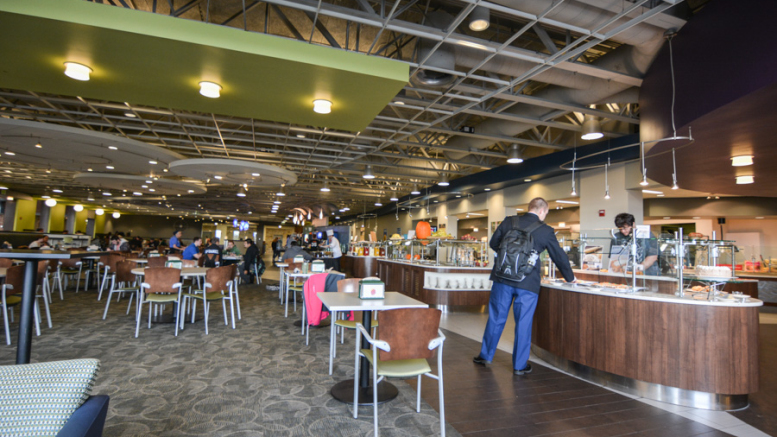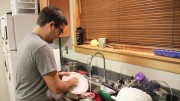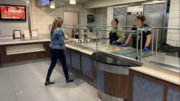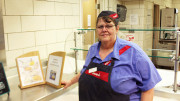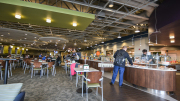In the fall of 2014, during the lunchtime rush at Englar Dining Hall, President Roger Casey and Beth Gerl, the vice president of student affairs and dean of students, signed the Real Food Challenge.
This student-led challenge prompted McDaniel to commit to obtaining 20 percent of all its food from local and environmentally- and animal-friendly food sources by 2020. Three years later, the college has seen success in moving toward its goal. As of November 2017, the college is currently at 7 percent, as measured by the Real Food Calculator.
Here’s how the calculator works: there are four categories that can qualify a food product as “real.” Those categories are local and community-based, fair, ecologically sound, and humane. Food that is inspected only needs to fit into one of these categories to be considered real.
Each category has three levels. These are green light, yellow light and red light. A green light entails stricter standards than yellow, and a red light — which disqualifies a food product — means a product can’t be considered real.
McDaniel students who are involved with the Real Food Challenge check in on Glar and use the Real Food Calculator criteria to compute the percentage out of the total amount of food in the dining hall’s stock to determine the real food percentage.
McDaniel gets 7 percent of all its food from local sources such as ProFish in Washington D.C., Hanover Foods and H&S Bakery in Baltimore. There is a full list of food sources inside the dining hall.
Rita Webster, Glar’s general manager, says the biggest challenge with this initiative is “getting student interest to drive the program.”
“It’s a lot of work to do and we are open to ideas, but they just have to help us get us to where we need to be,” she says.
Webster urges any students interested in becoming involved with the program to contact her via email at rwebster@mcdaniel.edu. Going forward, McDaniel will need more student involvement to reach its goal of 20 percent by 2020. It’s a full-time job — however, with help from students, this program will be a huge success.

